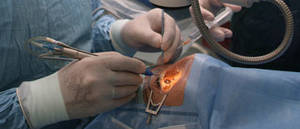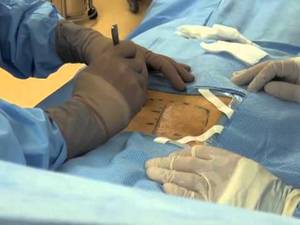A partial hysterectomy is a surgical procedure where only the uterus is removed, leaving the cervix intact. Recovery times vary depending on the individual’s health, surgical technique, and adherence to post-operative care guidelines.
Recovery Timeline by Surgical Approach
| Surgical Approach | Average Recovery Time |
|---|---|
| Laparoscopic | 2-4 weeks |
| Robotic-Assisted | 3-5 weeks |
| Open Abdominal | 4-6 weeks |
What is the Typical Recovery Time?
For most patients, the recovery time for a partial hysterectomy spans four to six weeks. However, several factors can influence this timeline:
- Surgical Approach: Minimally invasive techniques, such as laparoscopic or robotic-assisted surgery, typically result in shorter recovery times (around 2-4 weeks) compared to open abdominal surgery (4-6 weeks).
- Overall Health: Pre-existing health conditions or complications during surgery can extend recovery periods.
- Age and Fitness Level: Younger, more active individuals often recover faster than older adults or those with sedentary lifestyles.
How is Recovery Divided?
Immediate Post-Operative Phase (Day 1-7)
- Hospital Stay: Most patients undergoing minimally invasive surgery are discharged within 24-48 hours. Open surgery may require a hospital stay of 2-3 days. During this period, patients are monitored for any immediate post-operative complications, such as excessive bleeding or adverse reactions to anesthesia. Nurses and doctors also assess vital signs regularly to ensure stability.
- Pain Management: Expect mild to moderate abdominal pain, managed with prescribed medications. Pain levels can vary depending on the surgical approach and individual pain thresholds. Some patients find that over-the-counter medications, such as acetaminophen, are sufficient after the initial few days.
- Activity Level: Strictly limited; avoid lifting heavy objects, strenuous activity, or driving. Even simple activities like bending or stretching should be approached cautiously to avoid strain on the surgical site.
Early Recovery (Week 2-3)
- Mobility: Gentle walking is encouraged to improve circulation and prevent blood clots. Patients may find it helpful to take short, frequent walks rather than longer periods of movement to minimize fatigue.
- Diet: High-fiber foods and hydration help prevent constipation, a common side effect of surgery. Incorporate foods like oats, berries, and leafy greens to maintain regular bowel movements. Avoid processed foods that could exacerbate bloating or sluggish digestion.
- Wound Care: Follow your surgeon’s instructions for cleaning and monitoring incisions. Be vigilant about keeping the area dry and watch for signs of infection, such as redness or increased tenderness.
Mid-Recovery (Week 4-5)
- Increased Activity: Many patients can return to light housework or desk jobs, though standing or sitting for extended periods may still be uncomfortable. Gradual reintroduction of low-impact activities, like stretching (avoiding intense core movements), can help rebuild strength.
- Follow-Up Appointment: A check-up with your doctor ensures healing is on track and addresses any concerns. This visit may also include discussions about long-term health implications, such as hormonal changes or future screenings.
Full Recovery (Week 6 and Beyond)
- Physical Activity: Resume most normal activities, including exercise, unless advised otherwise. Activities like swimming, jogging, or moderate weightlifting can be reintroduced gradually.
- Emotional Well-being: Hormonal changes or adjustments may cause mood swings; open communication with a healthcare provider is key. Consider exploring hobbies or relaxation techniques that promote mental health.
- Sexual Activity: Typically, sexual activity can resume after six weeks, following clearance from your doctor. Be prepared for some initial discomfort and discuss any ongoing concerns with your provider.
Common Recovery Challenges
| Challenge | Percentage of Patients |
|---|---|
| Fatigue | 80% |
| Constipation | 60% |
| Emotional Changes | 50% |
| Incision Concerns | 40% |
- Fatigue: It’s normal to feel tired during the recovery period, and prioritizing rest is essential for healing. Gradually increase your activity levels over time, starting with short walks to boost circulation and energy levels. Listen to your body and avoid overexertion, which can delay recovery.
- Constipation: Post-surgical constipation is a common challenge due to anesthesia, medications, and reduced mobility. Use stool softeners if prescribed, and focus on a diet rich in fiber, such as whole grains, fruits, and vegetables. Staying hydrated is equally important, as it can help prevent discomfort and ease digestion.
- Emotional Changes: It’s not uncommon for patients to experience a range of emotions, from relief to feelings of loss or changes in self-perception. These feelings are natural and may result from hormonal fluctuations or the psychological impact of surgery. Joining support groups or seeking counseling can provide a safe space to share experiences and cope with these changes effectively.
- Incision Concerns: Pay close attention to your incision site, keeping it clean and dry as directed by your surgeon. Watch for signs of potential infection, such as redness, swelling, increased warmth, unusual discharge, or persistent pain around the area. Addressing concerns promptly can prevent complications and ensure a smoother recovery process.
Did You Know?
Patients who engage in light physical activity, such as walking, within the first week post-surgery can reduce the risk of blood clots by up to 30% (Source: National Institute of Health).
Tips for a Smooth Recovery
- Follow Instructions: Adhere to your surgeon’s guidelines for medication, wound care, and physical activity.
- Stay Hydrated: Proper hydration aids in healing and reduces constipation.
- Seek Support: Emotional support from loved ones or professional counselors can ease the mental toll of surgery.
- Plan Ahead: Arrange for assistance with household chores and childcare during the initial recovery phase.
When to Contact Your Doctor
Reach out to your healthcare provider immediately if you experience:
- Severe pain that is not relieved by prescribed pain medications and interferes with daily activities
- Persistent or high fever (above 100.4°F or 38°C) accompanied by chills, which could indicate an infection
- Unusually heavy vaginal bleeding, such as soaking through a pad every hour or passing large clots
- Sudden shortness of breath or chest pain, which may be signs of a serious condition like a blood clot in the lungs (pulmonary embolism)
- Noticeable signs of infection at the incision site, including redness, swelling, warmth, discharge with an odor, or increased pain at the site
Editorial Advice
Recovery from a partial hysterectomy is a journey unique to each individual. By understanding the typical timelines, adhering to medical advice, and prioritizing self-care, you can navigate this process with confidence. Remember, patience and support are key—give your body the time it needs to heal.
Complication Rates by Overall Health
| Health Condition | Complication Rate |
|---|---|
| No Pre-existing Conditions | 20% |
| Diabetes | 40% |
| Obesity | 50% |
| Cardiovascular Issues | 60% |









My sister has just had a partial hysterectomy. Is she likely to get some bleeding after.